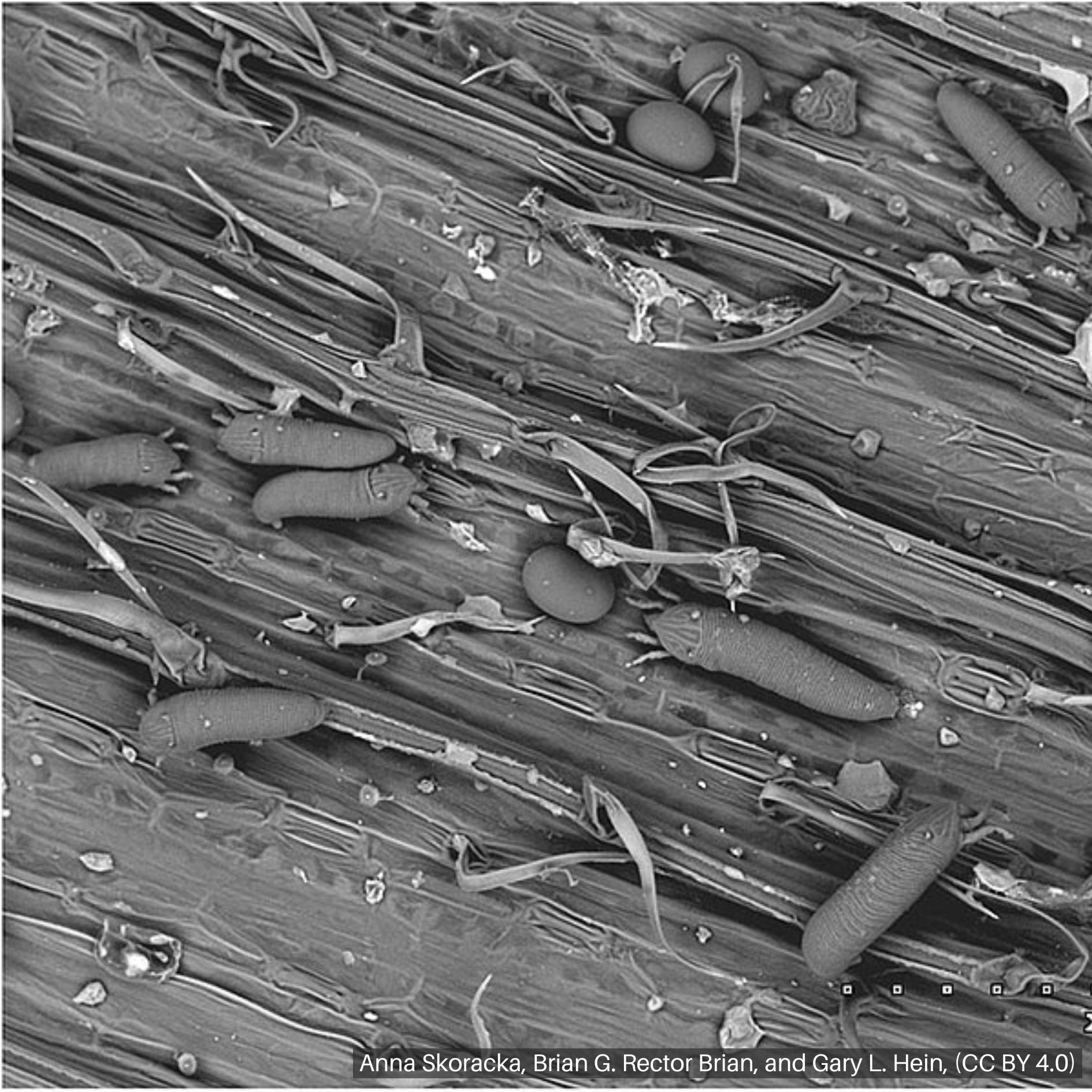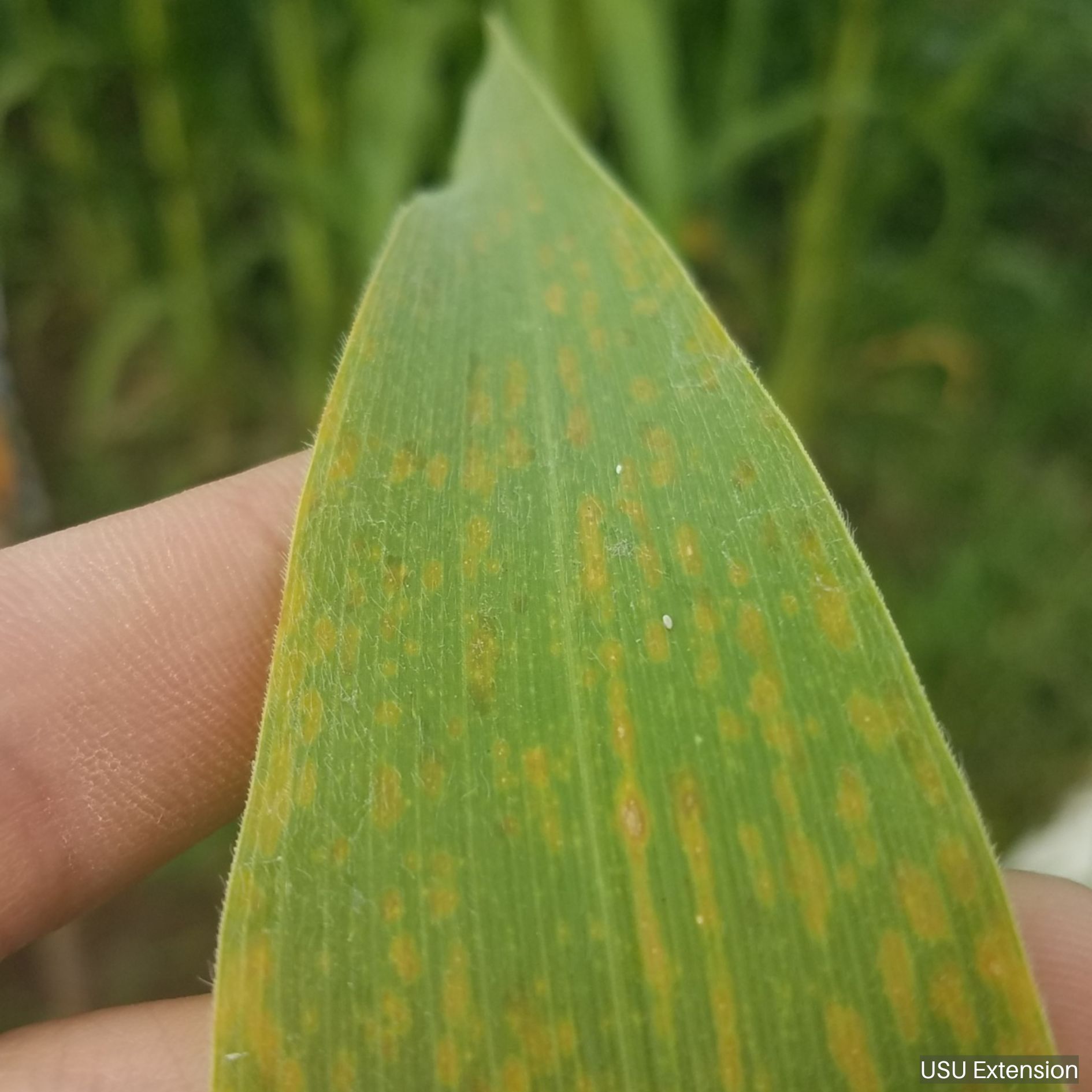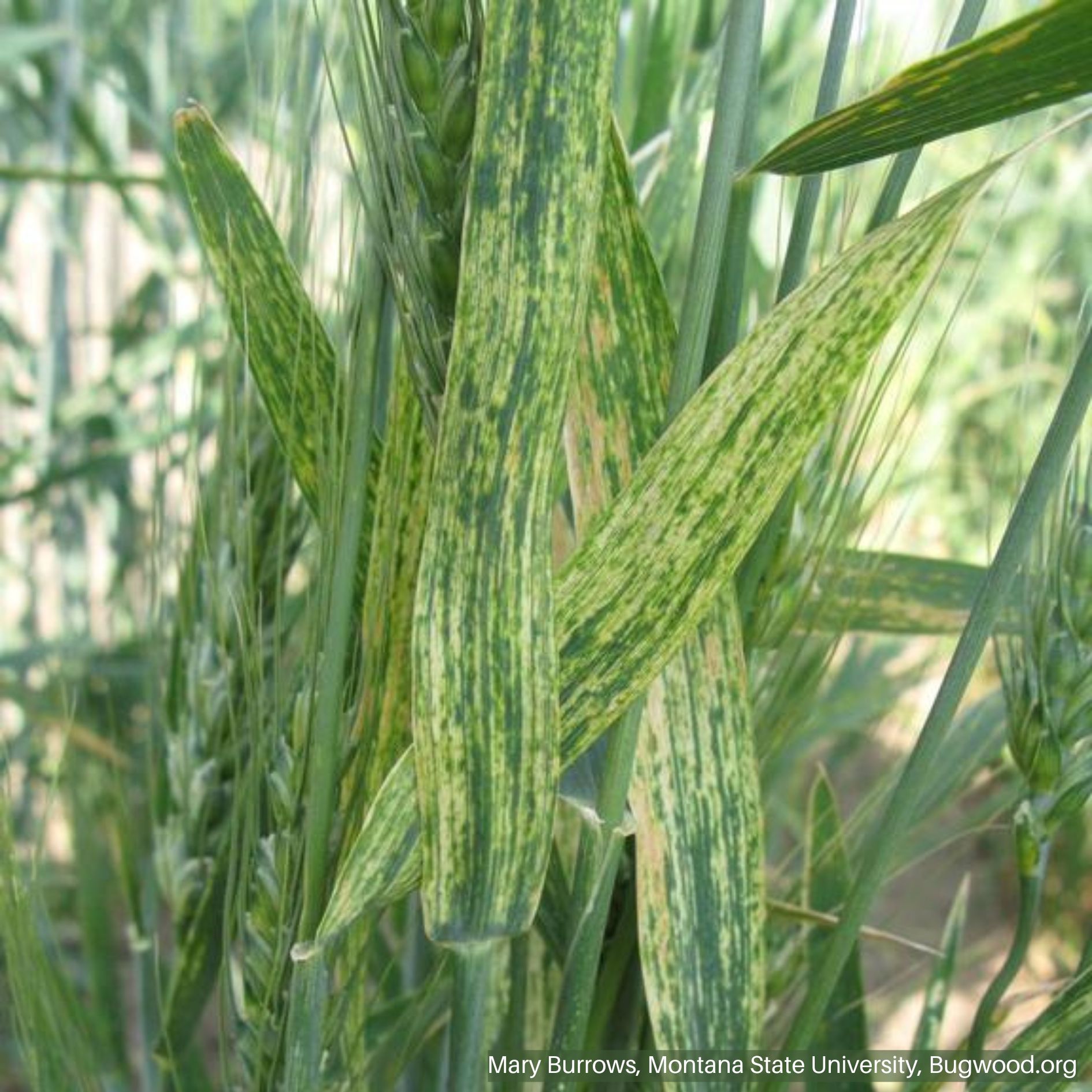Wheat Mosaic Virus
HOSTS
- Corn
- Wheat
- Barley
BIOLOGY
Wheat mosaic virus is an Emaravirus spread by the wheat curl mite (Aceria tosichella). It also seed-borne in corn. It is a concern throughout the growing season.
- The source of both wheat curl mites and the virus is typically volunteer wheat or grasses in ditches.
- Virus transmission occurs when wheat curl mites feed on host plants.
- Overwinters in winter annual grasses
SYMPTOMS
Initial symptoms are stunting and a mosaic pattern on leaves. As symptoms progress, yellow stripes, up to an inch wide, can be observed on leaves of infected plants and in some cases, purple streaks are observed.
GENERAL MANAGEMENT
High risk sweet corn includes sweet corn grown for seed, late May and early June emerging commercial sweet corn planted adjacent to wheat that is between heading and hard dough growth stage, and commercial sweet corn near winter annual grasses that have not matured yet. It can be especially problematic when no-till or strip till is used and crop rotation is between corn and wheat.
- Look for yellow streaking or mosaic patterns on young corn leaves starting in spring.
- Remove volunteer wheat and grass weeds.
- Plant seed early in the season before wheat dries down
There are no effective chemical control options.





